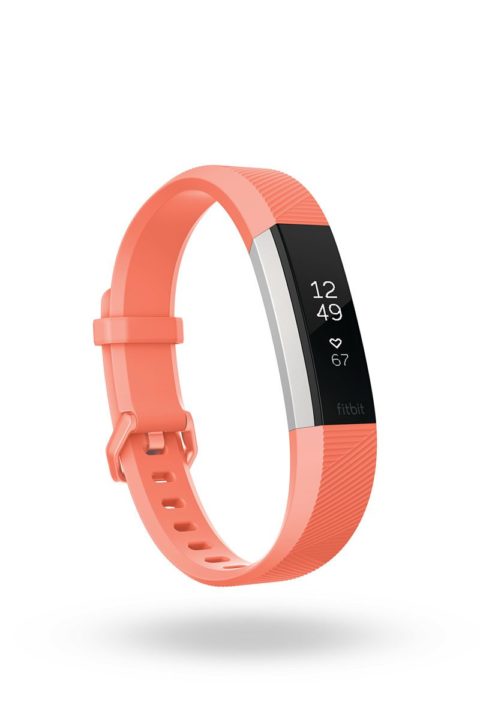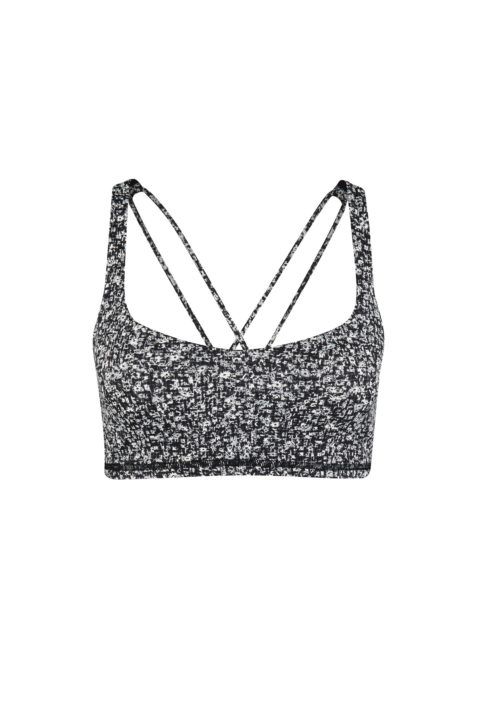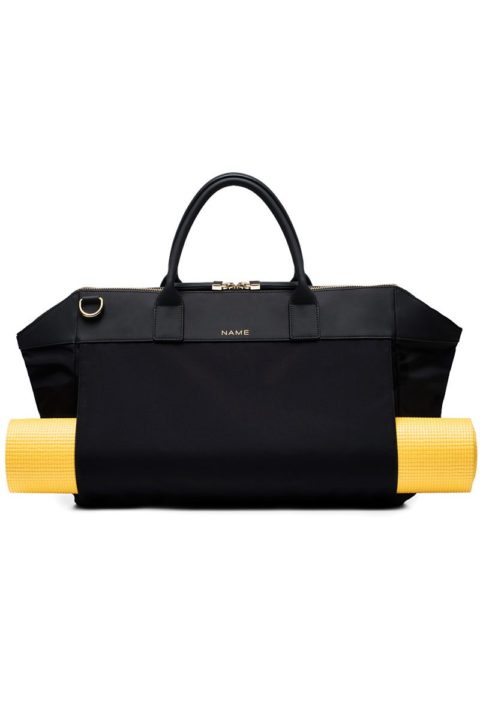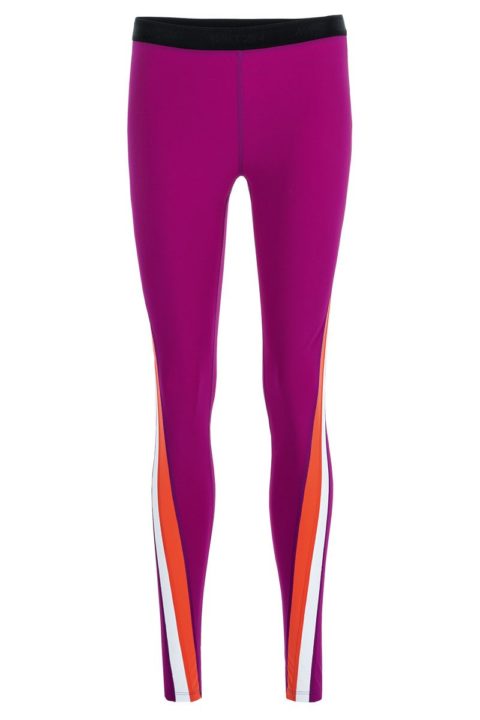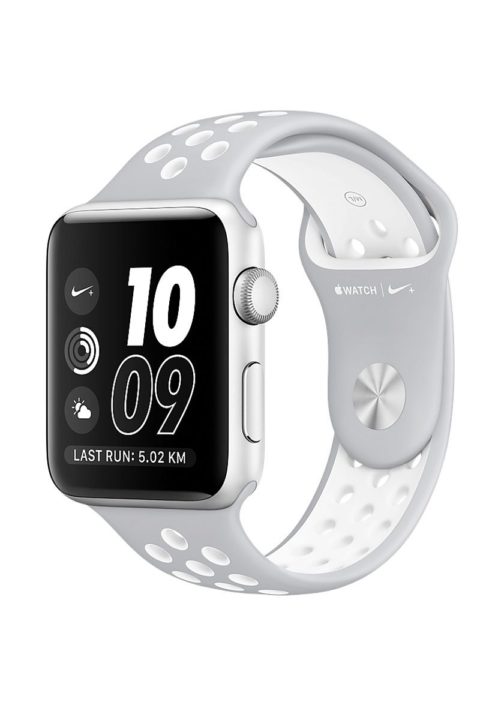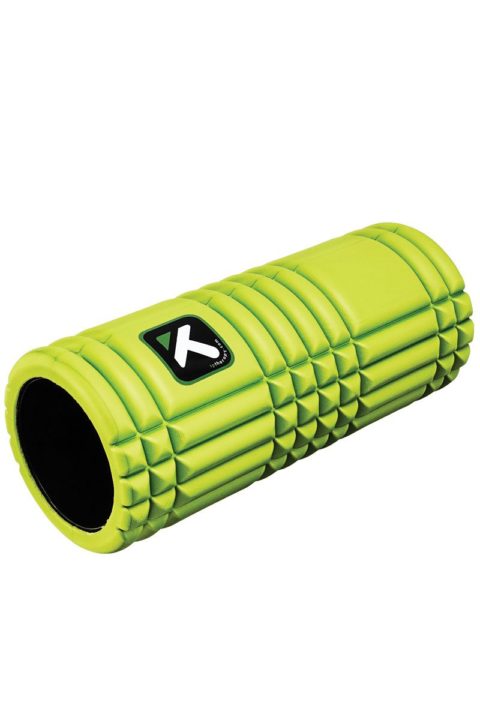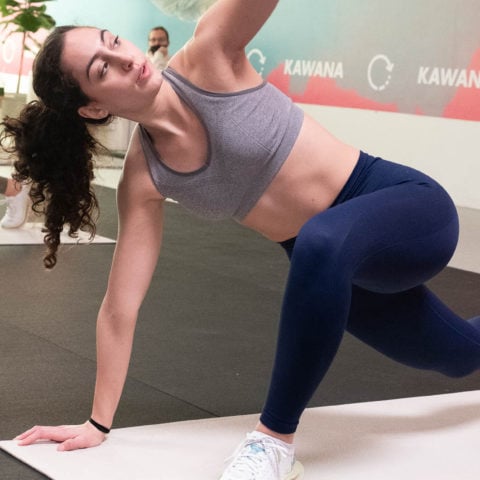How a Personal Trainer Changed My Life
Last fall I was offered the chance to work out with a Tier-3 (read: top level) personal trainer at Toronto’s Equinox Bay Street. To some, this might sound torturous, but for a health editor and fitness fanatic, it’s the fitness equivalent of a spa day. (The change rooms feature private showers with Kiehl’s products, a sauna and a steam room, and cool eucalyptus towels are available in the gym.)
Having spent the past near decade writing about fitness, I thought that I knew my way around a gym and that I could achieve whatever fitness goals I set out to accomplish—on my own. In fact, just a few months prior I had cancelled my YMCA gym membership, relying instead on my fave fitness app—Nike+ Training Club, or NTC—and workouts I’d made up out of moves I’d tried in various classes around Toronto. It’s free, I told myself, and all I need is enough room to roll out my yoga mat, which I did, sandwiched between my dining room table and living room.
This approach to fitness wasn’t foolproof, though. When I did manage to muster the willpower to choose exercise over Netflix, I often became frustrated with the plyometric moves, such as burpees or mountain climbers, that my app told me to do. Because of pre-existing lower-back strain, I could barely hold a plank without feeling it. After one particularly inspiring bootcamp class I took IRL in which I watched instructors doing push-ups and one-legged squats with ease, I decided that sometime this year I, too, would be able to do them. So when I met with personal trainer Drew Noel, a former CFL player, I filled him in on these rather specific goals. We had 12 weeks.
During my second training session—the first was a thorough fitness assessment—Noel assessed my squat. Without weight it was a cinch and my form was correct, but when he handed me a 15-pound kettlebell, that same nagging lower-back pain took over not even halfway through the set of 10. Anytime I had a twinge of discomfort, Noel would scrap the move—this was not a time when the “no pain, no gain” mantra was appropriate—replacing it with a modified version that alleviated the discomfort. This often meant forgoing weight to further perfect my form, ensuring that my legs, glutes and core were the focus in squats, deadlifts and lunges. He taught me how to brace my core, which meant fighting my natural urge to tilt my pelvis backward. “What’s the first thing you’re going to do?” Noel asked me innumerable times. “Brace my core,” I learned to respond. (I even found myself doing this on my walk to work.)
While my app and group fitness instructors would tell me to “keep my core tight” on the reg, I didn’t know how that translated to my body. I had always made a valiant effort to squeeze my abs whenever I was told to do so. And each of us likely has some sort of disconnect between what we tell our bodies to do and how they actually respond.
According to Catalyst Canada, a digital marketing company in Canada, 75 per cent of Canadians own a smartphone and 30 per cent of them have downloaded one or two health apps. And while health apps can range widely in scope, a 2015 study published by the Journal of Medical Internet Research (JMIR) found that the main reasons why people download them are to track physical activity, food consumption and weight loss and to learn exercises.
In theory, this should mean that we’re well on our way to leading happier and healthier lives, but are we? To find out, researchers looked at the behaviour change techniques (BCT) that are used in apps — from providing feedback to self-monitoring to goal setting. A study published in the American Journal of Preventive Medicine found that some apps tend to » use less effective BCTs like social media to provide social support instead of ones that are more effective like self-monitoring. (Many tracking devices and apps require no such act.)
So why, then, are some of our fitness apps gathering digital dust? The JMIR study found that 46 per cent of those surveyed had health apps they no longer used. Noel tells me that even in his “analog” biz there are barriers to success, the top three being a lack of focus, inconsistency and an inability to make a long-term commitment. Despite managing a busy work schedule and a three-hour daily commute, I carved out time for my twice-weekly hour-long sessions. I stayed committed because I always left the gym feeling so strong and energized. I also felt more productive. In terms of stress management? Like hairdressers, personal trainers are incognito therapists. (Sorry, Drew.)
During my personal training sessions at Equinox, I learned a lot about performing exercises properly and got hella strong—I could deadlift with weight (!!!), plank like a champ and do push-up exercises with zero back pain. But what struck me the most was the lesson I got in goal setting.
“I think a lot of people come in with the mindset of ‘I want to look like this’ or ‘I want to lift this much weight in this much time,’” says Noel. “To drop 10 pounds in three weeks because you’re going on a vacation is not realistic. Sometimes I just have to correct people and say that’s not a realistic goal and kind of adjust it. I want my clients to effectively train and develop practical lifestyle habits.”
While I have yet to do a one-legged squat, I’m thrilled with the results I didn’t even know I desired. I learned how to counteract the root of my back pain, and I reignited my love for lifting weights. I now feel prepared to reopen NTC—which has been updated to be more adaptive, so the more you use it, the more it caters to your schedule and adjusts your workouts—because I know my limits, and I also know that choosing not to do something that hurts is totally OK.
An article in Time magazine last fall extolled the virtues of exercise with an unprecedented level of hype. Marcas Bamman, director of the Center for Exercise Medicine at the University of Alabama at Birmingham, said: “If you think of exercise as a true form of medicine, which it is, it’s not good enough to just look at a patient and say, ‘You need to do more exercise’…. That’s no better than handing someone a bottle of pills and saying, ‘Here, take a few.’”
I feel like I got my exercise prescription in those 12 weeks, and when I feel an ache or a pain, or reach a plateau, I know who to call for a checkup.



